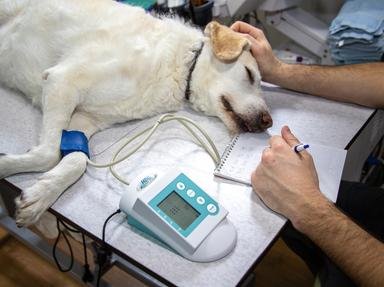Quiz Answer Key and Fun Facts
1. A hotspot is a sensitive, warm and probably purulent (containing pus) area on the dog's skin. Most of the time the hair falls out from trauma and the area is reddish in color. What are other names for a hotspot?
2. Which of the following actions doesn't necessarily aggravate a hotspot?
3. Licking may ___________ hotspot infections.
4. Which of the following should be avoided when your dog has a hotspot?
5. Which of the following wouldn't you use to prevent the dog from biting him/herself?
6. Which of the following plants can be used to ameliorate a hotspot?
7. It is beneficial to clip the dog's fur around the hotspot to help the hotspot heal.
8. Which of the following can make a hotspot appear?
9. _________ can start the biting which may later on develop into a hotspot.
10. If you've done all you can, yet your dog still suffers from hotspots, why is it important to go to the vet?
Source: Author
Jr_Dog_Expert
This quiz was reviewed by FunTrivia editor
crisw before going online.
Any errors found in FunTrivia content are routinely corrected through our feedback system.
